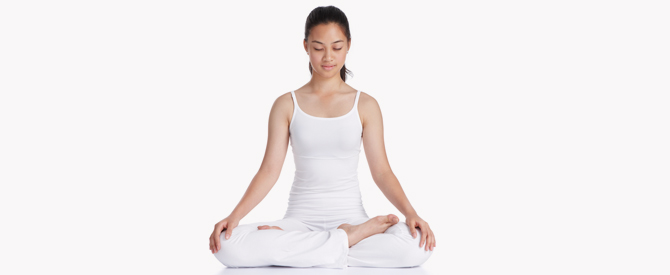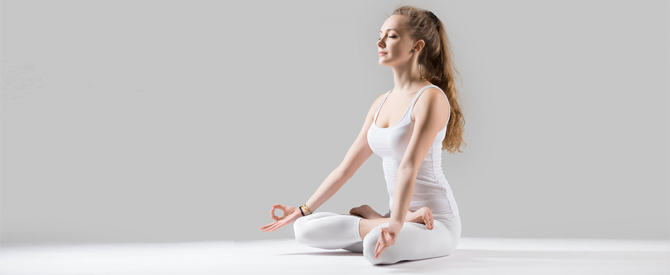The practice of meditation has been taught and explored exhaustively in eastern spiritual traditions.
In this article, I will be sharing the basic meditation techniques as they are found in Vedanta, the spiritual science of life.
- When – the best time to meditate and how often
- Where – how to set up your meditation seat
- Posture – how you should sit to meditate
- Method: – how, where and what to concentrate on
Before going into the actual instructions, it’s important to first understand what is meditation and its goal.
What is Meditation?
Meditation is the state of remaining steadfast in your true spiritual nature.
Right now, you identify with your physical body, emotions and thoughts, thinking yourself to be a limited human being.
The only thing that keeps you from recognizing your true, natural spiritual state is your mind.
The mind is a flowing river of thoughts. As long as the thoughts flow, the mind exists. As long as the mind exists, you don’t recognize or see the real you.
The real you exists beyond the mind.
The Goal of Meditation
The goal of meditation is to first slow down the thoughts and then stop them completely.
Once you are able to do this, the real spiritual you that was always there behind the thoughts, is realized.
The Best Time
The spiritual masters praised the early pre-dawn hours as the best time to practice meditation.
This is because if you have slept early enough and are well rested, this is the time when the mind is the most quiet and alert. There are no distractions around you or pressing responsibilities.
This is not easy with our modern busy lives, so what is important to remember is to take this prescription and apply it to suit your lifestyle.
Find a time when you are not tired and things are quiet around you.
It could be first thing in the morning or the last thing at night. Dawn and dusk are especially suitable for quiet thought and meditation.
Again, do what fits in with your lifestyle and schedule.
Find what suits you and make it your regular time for meditation.
How Often?
You must meditate everyday,
Where?
Find a place where you can be alone and undisturbed. It could be a special room in your home or just a quiet corner dedicated for this purpose.
It’s important to create a dedicated space solely for quiet thought, contemplation and meditation.
Body Posture
The mind and the body are interconnected. If you slouch in a lazy chair, you tend to become lazy. If you lie down in bed, you tend to become sleepy.
To stay quiet and alert, the mind has to be supported by the right upright posture.
Sit with your back, neck and head all in one straight line.
Fold a thin cotton or wool blanket or low cushion that you can sit on comfortably.
You can create a meditation seat with this on the floor if you can cross your legs. Or, you can sit cross-legged on an armless chair if you’d like to support your back.
If you can’t cross your legs, that’s no problem. Simply remember to keep both feet flat on the floor as you sit on a chair while keeping the upright back posture.
Place your hands comfortably in your lap or on your knees.
Take a few slow, deep breaths to relax your body. Then gently close your eyes.
How, Where and What to concentrate on
- Bring your awareness to your breath
- Don’t change the way you are breathing. Simply observe how you are breathing.
- By bringing your attention to your breath, your breathing naturally and gradually slows down.
- Notice how cool air enters your nostrils and leaves as warm air.
- Continue taking slow, deep breaths.
- Observe your thoughts as they come into your consciousness. Don’t jump in and follow the thought. Simply allow it to pass through your mind without your active engagement in it.
- This practice of simply watching the thoughts is very, very difficult. This is because we are accustomed to identifying with the mind and its thoughts and taking ownership of them.
- To separate yourself from your thoughts, gently bring your attention to your breath.
- Again and again, practice gently nudging your consciousness away from your mind and back to your breath.
- When you begin to tire, slowly bring your attention to your body. You may move your neck, arms and legs gently. Open your eyes and smile!
These then, are the basic instructions with which you can start a simple meditation practice.
Start by sitting quietly for 5 to 10 minutes daily. With practice, you can gradually increase your quiet time to about 30 to 45 minutes.
Regularity and sticking to a specific time everyday are very important in helping to train the mind to become more and more peaceful. This peace can transform your life completely.
Like this post? Sign up for the free fortnightly Spiritual Solutions Newsletter and receive the latest articles, news and updates in your email inbox!













